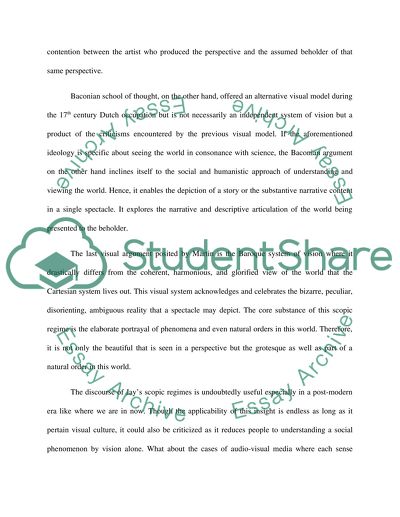Baconian, and Baroque Systems of Vision Essay Example | Topics and Well Written Essays - 500 words. Retrieved from https://studentshare.org/philosophy/1565943-summary-essay
Baconian, and Baroque Systems of Vision Essay Example | Topics and Well Written Essays - 500 Words. https://studentshare.org/philosophy/1565943-summary-essay.


